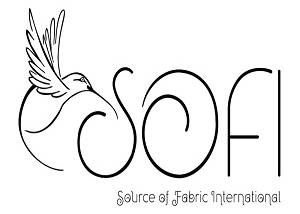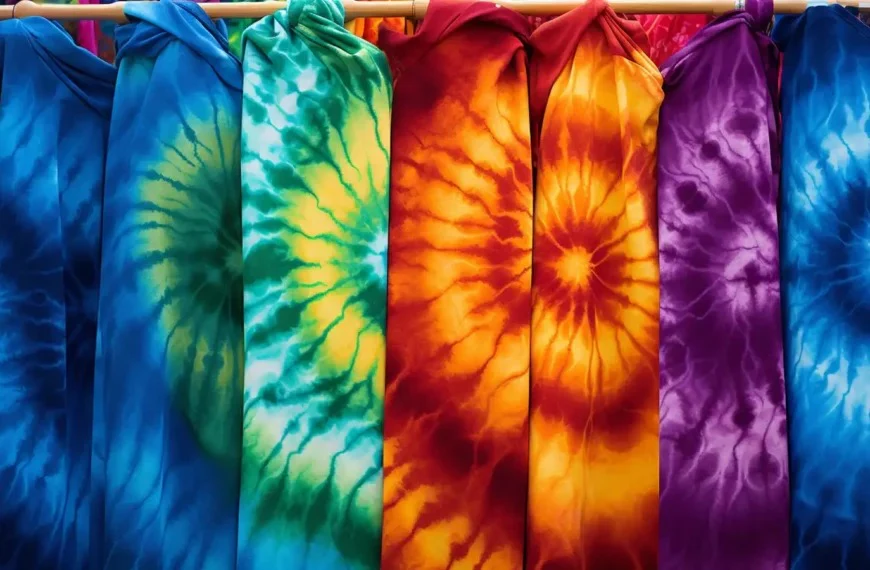The History and Techniques of Tie-Dye
With its eye-catching colors and complex designs, tie-dye is a colorful and whimsical textile art form that has captured people’s attention for years. Tie-dye, which has its roots in many cultures worldwide, has evolved throughout time from conventional techniques to bold fashion statements. This article examines the origins, methods, cultural relevance, and contemporary resurgence of tie-dye.
Background Information in History
The history of tie-dye extends thousands of years into the past. Similar dyeing methods were used by ancient societies in Africa, Asia, and India; natural colors made from plants, minerals, and insects were frequently used. For example, the “bandhani” technique in India involves binding portions of cloth to resist dye, resulting in intricate designs that have been used for ages to beautify clothing. In contrast, the Japanese technique of “shibori” creates beautiful motifs through elaborate folds and bindings.
During the counterculture movement of the 1960s, tie-dye became popular in the West. It began to represent uniqueness and defiance of societal conventions. The youthful generation, who looked to art and fashion as a means of self-expression, connected with the vibrant colors and distinctive patterns that personified the spirit of love and peace.
Methods for Tie-Dye
The ease of use and adaptability of tie-dye are what makes it so beautiful. Artists can use a variety of approaches, however many may only think of the spiral designs that gained popularity in the 1960s. Basic Tying and Binding: To produce pieces of fabric that will resist dye, use rubber bands or tie knots. Numerous designs can be created by twisting, folding, or crumpling the fabric.
Squeeze bottles: Squeeze bottles with color inside allow for accurate application for individuals who want to create more controlled designs. This method is widely used to create complex text or patterns.
Dye Immersion: This technique can produce a more consistent color base because it entails completely immersing the cloth in dye. For more intricate compositions, artists might then layer other techniques on top of this foundation.
Layering Colors: Putting various colors together can produce amazing effects. Artists are able to give their works a sense of depth and vitality by applying layers of color.
Resist Dyeing: Beyond tying, tie-dye can incorporate methods such as wax resist (batik). This technique creates detailed motifs by applying wax to the fabric to stop the dye from penetrating certain spots.
Cultural Importance
Tie-dying has been associated with many meanings in many civilizations throughout history. It is a rite of passage as well as a fashion statement in many African societies. Customary tie-dying methods frequently entail community involvement, highlighting social ties and group inventiveness. In Japan, shibori is deeply ingrained in custom and frequently utilized in ceremonial attire, signifying a link to one’s past.
Tie-dye has developed into a symbol of artistic expression in contemporary Western civilization. The fashion industry’s return to tie-dye is indicative of a larger societal movement toward sustainability and individuality. The demand for tie-dye has increased along with people’s interest in handcrafted, one-of-a-kind goods, which has resulted in a resurgence of DIY workshops and techniques.
The Contemporary Resurrection
From casual streetwear to high-end runway presentations, the tie-dye trend of today has taken numerous shapes. The versatility of tie-dye art is demonstrated by the inclusion of the technique in collections by well-known designers and businesses. Particularly, athleisure brands have embraced tie-dye, frequently utilizing it to produce carefree, vibrant clothing that is appealing to a broad range of consumers.
Tie-dye fashion has also been greatly aided by social media sites like Instagram and TikTok. A new generation of artists has been encouraged to try this medium via DIY tutorials and creative exhibitions. Many people have started making their own tie-dye items at home, which has led to the growth of a dynamic online community of aficionados who exchange advice, methods, and colorful creations.
In summary
Beyond just a fad, tie-dye is a vibrant tapestry of culture, history, and artistic expression. From its historic beginnings to its current renaissance, tie-dye has changed while upholding its fundamental values of originality and inventiveness. Tie-dye serves as a reminder of the richness of self-expression and the relationships that art can establish across countries and generations, especially as long as people continue to enjoy this lighthearted art form. tie-dye will surely continue to be a popular art style for years to come, whether it is used in traditional settings or modern clothing.


